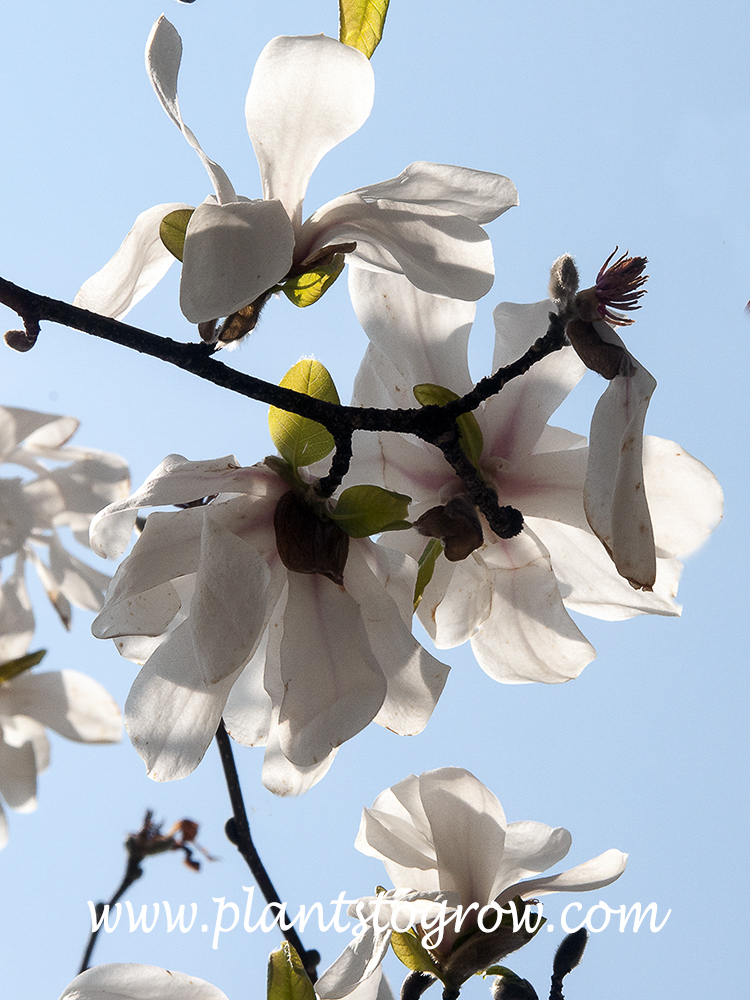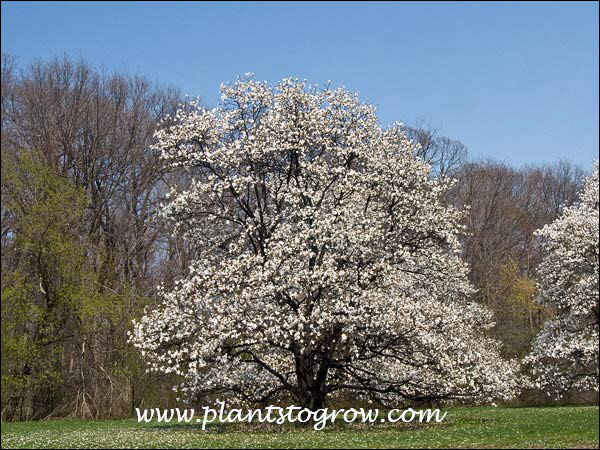| Description | Merrill Magnolia (Magnolia x loebneri) A medium Magnolia with large white flowers. |
|---|---|
| Pronunciation | (mag-NO-li-ah)(LEEB-ner-eye) |
| Plant Type | All Plants, Trees Deciduous |
| Hardiness Zone | 5-8 |
| Sunlight | grows best in full sun, tolerates some shade |
| Moisture | average, moist |
| Soil & Site | average to rich, well drained, slightly acid |
| Flowers | 5-6 inch white blooms with a hint of pink, 15 tepals |
| Leaves | alternate, simple, green |
| Stems | pubescent terminal buds, smooth gray bark on the stem |
| Dimensions | 20 by 20 feet |
| Maintenance | pruning should be done after flowering, best grown in a spot sheltered from the wind |
| Cultivar Origin | Clone raised at the Arnold Arboretum between 1939-1940, named after Elmer Merrill director of the Arnold Arboretum. Across between M. kobus and M. stellata. |
| Misc Facts | The genus loebneri is named after Max Loebner the original hybridizer of M kobus x M. stellata around 1917. |
| Author's Notes | Magnolia a beautiful when in bloom. As they shed their petals (tepals) the ground gets covered with what I call Magnolia snow. |
| Notes & Reference | #01-Manual of Woody Landscape Plants (Dirr), #86-A Gardner’s Guide to Magnolias (Gardiner) |

Cart



